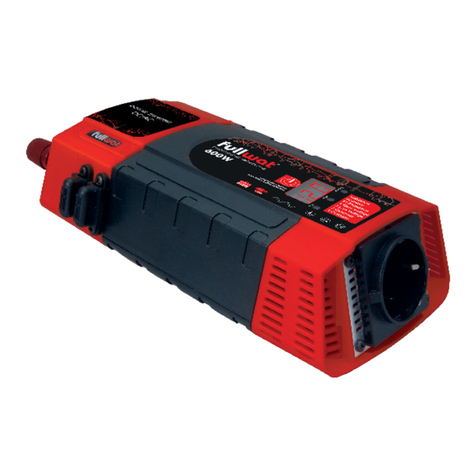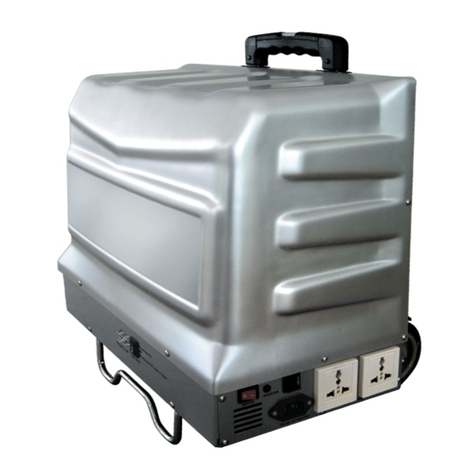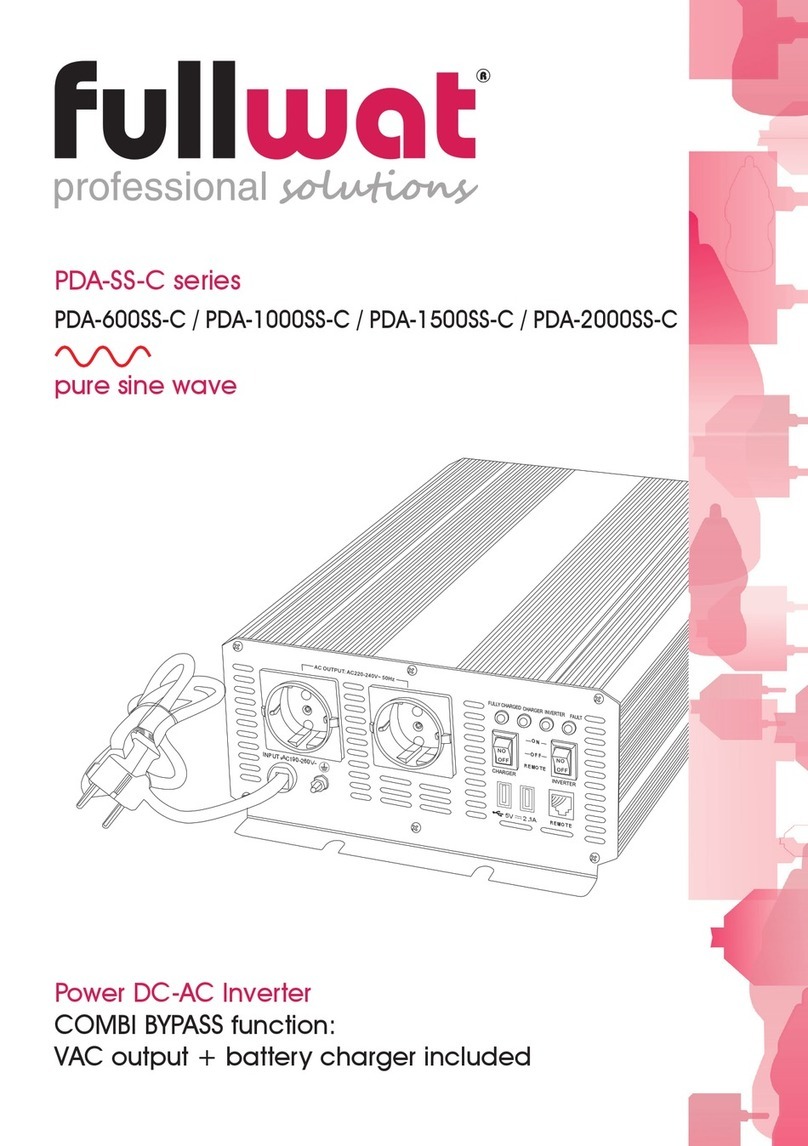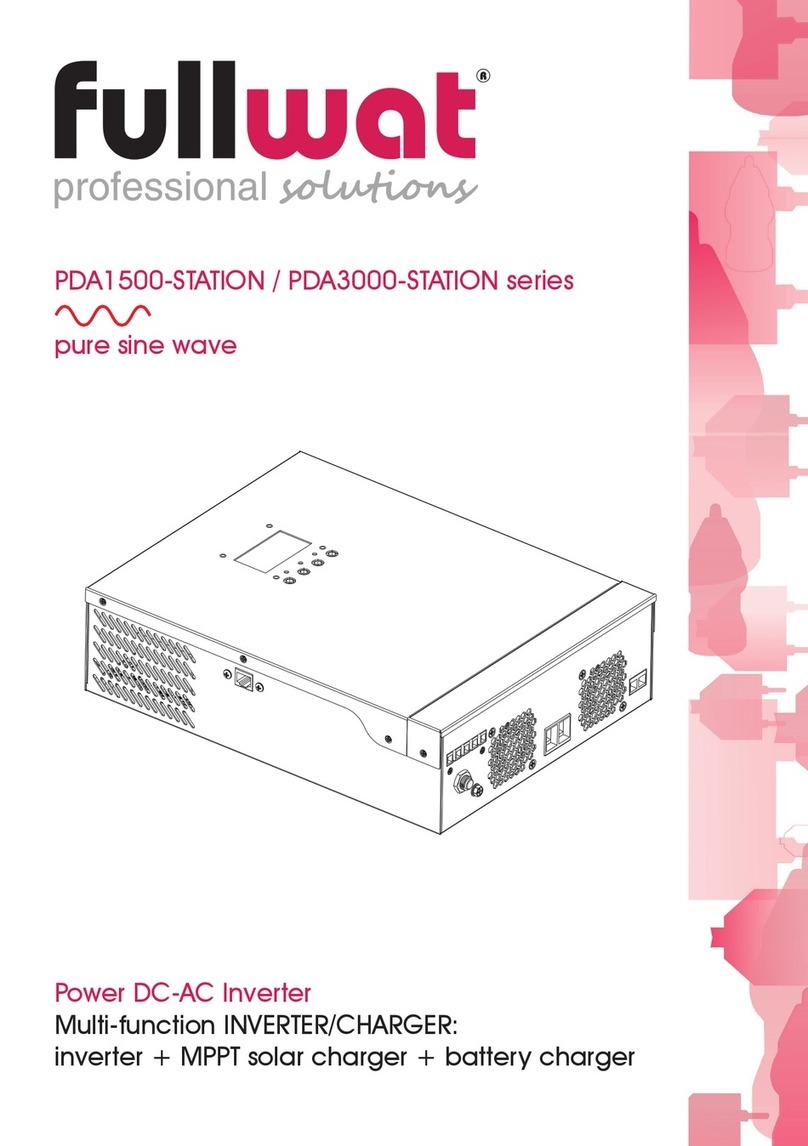
- 5 -
5. INSTALLATION
5.1 Unpacking and Inspection
Befare installation, please inspect the unit. Be sure that nothing inside the package is damaged. You should
have received the following items inside of package:
• The unit x 1
• User manual x 1
• Communication cable x 1
5.2 Preparation
Before connecting all wirings, please take off bottom
cover by removing two screws as shown below.
5.3 Mounting the unit
Consider the following points before selecting where to install:
• Do not mount the inverter on flammable construction
materiaIs.
• Mount on a solid surface
• Install this inverter at eye level in order to allow the LCD display
to be read at all times.
• The ambient temperature should be between 0ºC and 55ºC
to ensure optimal operation.
• The recommended installation position is to be adhered to the
wall vertically.
• Be sure to keep other objects and surfaces as shown in the
right diagram to guarantee sufficient heat dissipation and to
have enough space for removing wires.
SUITABLE FOR MOUNTING ON CONCRETE OR OTHER
NON-COMBUSTIBLE SURFACE ONLY.
Install the unit by screwing three screws.
It’s recommended to use M4 or M5.
5.4 Battery connection
Caution:
For safety operation and regulation compliance, it’s requested to
install a separate DC over-current protector or disconnect device
between battery and inverter. It may not be requested to have a
disconnect device in some applications, however, it’s still requested
to have over-current protection installed. Please refer to typical
amperage in below table as required fuse or breaker size.
WARNING! AII wiring must be performed by a qualified
personnel.
WARNING! It’s very important for system safety and efficient
operation to use appropriate cable for battery connection. To
reduce risk of injury, please use the proper recommended cable
and terminal size as below.
D
L
Ring terminal



































